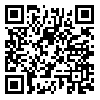دوره 16، شماره 3 - ( 3-1404 )
جلد 16 شماره 3 صفحات 550-533 |
برگشت به فهرست نسخه ها
Download citation:
BibTeX | RIS | EndNote | Medlars | ProCite | Reference Manager | RefWorks
Send citation to:



BibTeX | RIS | EndNote | Medlars | ProCite | Reference Manager | RefWorks
Send citation to:
Balali M R, Hosseini M, Khanboloki M, Mohammadi M, Khorshidvand A M, Taghi Joghataei M. Pathways Mediating Blindsight After V1 Injury: A Systematic Review of Human and Monkey Studies. BCN 2025; 16 (3) :533-550
URL: http://bcn.iums.ac.ir/article-1-3057-fa.html
URL: http://bcn.iums.ac.ir/article-1-3057-fa.html
Pathways Mediating Blindsight After V1 Injury: A Systematic Review of Human and Monkey Studies. مجله علوم اعصاب پایه و بالینی. 1404; 16 (3) :533-550
چکیده:
Introduction: Although damage to the visual area (V1) leads to visual impairment, some patients retain the ability to process visual information unconsciously, a phenomenon known as blindsight. This study aims to systematically review and compare the proposed neural pathways mediating blindsight in humans and monkeys, providing a structured framework for future investigations in this field.
Methods: This is a systematic review of related articles retrieved from online databases. Following the screening process, we employed the JBI critical appraisal checklist as well as the SYRCLE tool to assess the risk of bias in human and animal studies. We selected 25 articles focusing on the mediating pathways of blindsight.
Results: In humans, the pathways from the lateral geniculate nucleus (LGN) to V5, from the superior colliculus (SC) to higher brain areas, and to the remaining segments of V1 are crucial. The pathway that connects the SC, pulvinar, and amygdala is essential for processing emotional visual information. Studies conducted on monkeys emphasized the importance of the SC-pulvinar pathway and the connections between the LGN and extrastriate visual areas for developing blindsight.
Conclusion: Rather than a single consistent pathway, blindsight appears to involve multiple parallel routes whose engagement depends on factors such as lesion extent, individual neuroanatomy, and time since injury. Future studies should explore the therapeutic potential of these pathways by integrating.
Methods: This is a systematic review of related articles retrieved from online databases. Following the screening process, we employed the JBI critical appraisal checklist as well as the SYRCLE tool to assess the risk of bias in human and animal studies. We selected 25 articles focusing on the mediating pathways of blindsight.
Results: In humans, the pathways from the lateral geniculate nucleus (LGN) to V5, from the superior colliculus (SC) to higher brain areas, and to the remaining segments of V1 are crucial. The pathway that connects the SC, pulvinar, and amygdala is essential for processing emotional visual information. Studies conducted on monkeys emphasized the importance of the SC-pulvinar pathway and the connections between the LGN and extrastriate visual areas for developing blindsight.
Conclusion: Rather than a single consistent pathway, blindsight appears to involve multiple parallel routes whose engagement depends on factors such as lesion extent, individual neuroanatomy, and time since injury. Future studies should explore the therapeutic potential of these pathways by integrating.
نوع مطالعه: Review |
موضوع مقاله:
Behavioral Neuroscience
دریافت: 1403/7/25 | پذیرش: 1403/8/29 | انتشار: 1404/2/11
دریافت: 1403/7/25 | پذیرش: 1403/8/29 | انتشار: 1404/2/11
| بازنشر اطلاعات | |
 |
این مقاله تحت شرایط Creative Commons Attribution-NonCommercial 4.0 International License قابل بازنشر است. |





